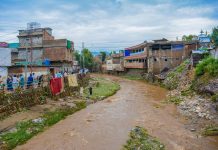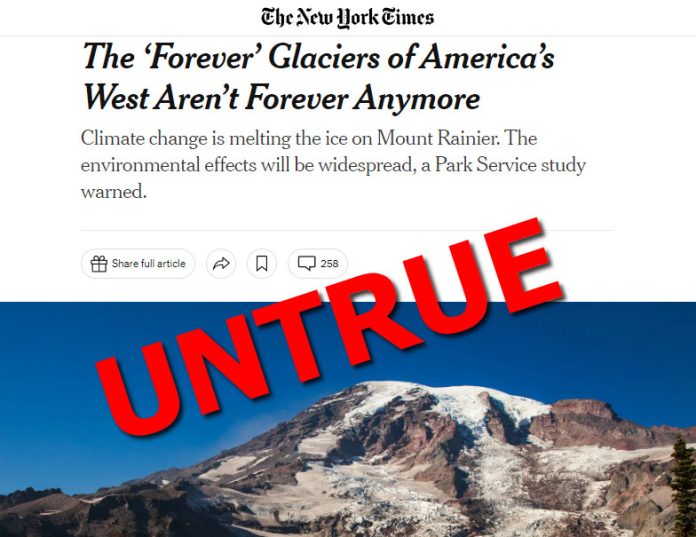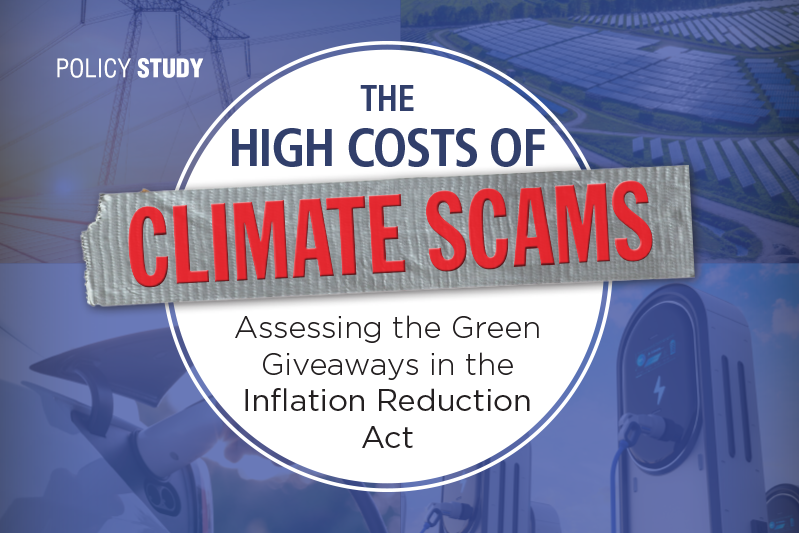Editors note: The New York Times ran a story on September 9th, 2023, titled:The ‘Forever’ Glaciers of America’s West Aren’t Forever Anymore
An excerpt:
Climate change is melting the ice on Mount Rainier. The environmental effects will be widespread, a Park Service study warned.
…
The changes reflect a stark global reality: Mountain glaciers are vanishing as the burning of fossil fuels heats up Earth’s atmosphere. According to the World Glacier Monitoring Service, total glacier area has shrunk steadily in the last half-century; some of the steepest declines have been in the Western United States and Canada.
Meteorologist Cliff Mass, Ph.D. of the University of Washington published a solid rebuttal to this claim back in June 2023, which is reproduced here from his website.
The Real Story About a “Melting” Mount Rainier
As many readers of the blog know, I often provide a reality check for over-the-top and often inaccurate Seattle Times articles dealing with climate change.
It is unfortunate that the Seattle Times has moved to an advocacy role on the issue of climate change, often exaggerating the effects of global warming. They often fail to provide reliable information to their readers on this important topic.
In yesterday’s online paper, they had a front-page story written by their columnist, Danny Westneat: Mount Rainier is melting. Can anything be done to stop it?
As you can imagine, they are talking about the glaciers on Mt. Rainier. The story references a new “piercing” National Park Service report and talks about the substantial reduction in glacier ice volume.
The message in the article is clear: Rainier’s glaciers are now rapidly retreating and that human CO2 emissions are the cause. We need to act now.
“It’s climate change before your eyes.”
“We’ve really got to focus on how we emit carbon into the air.”
The truth is that Rainier’s glacial melt has been predominantly natural, with human carbon emissions a small part of the story.
Although the story was supposedly motivated by a new report by Scott Beason and associates of the National Park Service (a very nice piece of work, I might add), this article NEVER mentions that most of the glacial loss on Rainier has little to do with human-caused climate change produced by increasing CO2, and the proof of this statement is found in the report itself.
Consider Figure 6 of the report, which shows the change in glacial ice area on Mount Rainier since 1895 (below). The glacial area has been reduced from around 130 km2 to around 75. Note that most of the loss was between 1895 and 1970, a period when there was very little human-caused global warming.
There is, a large literature demonstrating the impacts of human greenhouse gas emissions is only significant after approximately 1980. Thus, the majority of the loss of Rainier’s glacial ice had to be natural.
Don’t get me wrong: global warming due to our emissions of greenhouse gases is slowly warming the planet and such warming would contribute to glacial melt during the past few decades. But that contribution has been quite modest compared to natural variability, something that is not mentioned in the article.
The long-term perspective is critical for looking at such climatological data. Imagine I plotted only the last 30 years of Rainier summer temperatures (see below).
The Bottom Line
Most of the loss has been natural and occurred before human-forced global warming could have been significant.


















.png)
.png)
.png)








